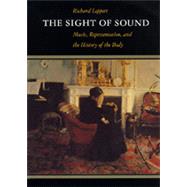
Note: Supplemental materials are not guaranteed with Rental or Used book purchases.
Purchase Benefits
What is included with this book?
| Preface and Acknowledgments | |
| Translator's Note Abbreviations | |
| Introduction | |
| Locating Music: Society, Modernity, and the New Commentary | |
| Music, Language, and Composition (1956) | |
| Why Is the New Art So Hard to Understand?* (1931) | |
| On the Contemporary Relationship of Philosophy and Music* (1953) | |
| On the Problem of Musical Analysis (1969) | |
| The Aging of the New Music (1955) | |
| The Dialectical Composer* (1934) | |
| Culture, Technology, and Listening Commentary | |
| The Radio Symphony (1941) | |
| The Curves of the Needle (1927/1965) | |
| The Form of the Phonograph Record (1934) | |
| Opera and the Long-Playing Record (1969) | |
| On the Fetish-Character in Music and the Regression of Listening (1938) | |
| Little Heresy* (1965) | |
| Music and Mass Culture Commentary | |
| What National Socialism Has Done to the Arts (1945) | |
| On the Social Situation in Music (1932) | |
| On Popular Music [With the assistance of George Simpson] (1941) | |
| On Jazz (1936) | |
| Farewell to Jazz* (1933) | |
| Kitsch* (c. 1932) | |
| Music in the Background* (c. 1934) | |
| Composition, Composers, and Works Commentary | |
| Late Style in Beethoven (1937) | |
| Alienated Masterpiece: The Missa Solemnis (1959) | |
| Wagner's Relevance for Today (1963) | |
| Mahler Today* (1930) | |
| Marginala on Mahler* (1936) | |
| The Opera Wozzeck* (1929) Toward an Understanding of Schoenberg* (1955/1967) | |
| Difficulties* (1964, 1966) | |
| Bibliography | |
| Index An asterisk (*) following a title indicates that the essay is here translated into English for the first time | |
| Table of Contents provided by Publisher. All Rights Reserved. |
The New copy of this book will include any supplemental materials advertised. Please check the title of the book to determine if it should include any access cards, study guides, lab manuals, CDs, etc.
The Used, Rental and eBook copies of this book are not guaranteed to include any supplemental materials. Typically, only the book itself is included. This is true even if the title states it includes any access cards, study guides, lab manuals, CDs, etc.